Juicy, tender salmon fillets perfectly seared and cooked to perfection. The best part: no white stuff! This salmon recipe is the only recipe you’ll need for any type of salmon (frozen OR fresh). Should I even add that you only need butter, water, salt and pepper?
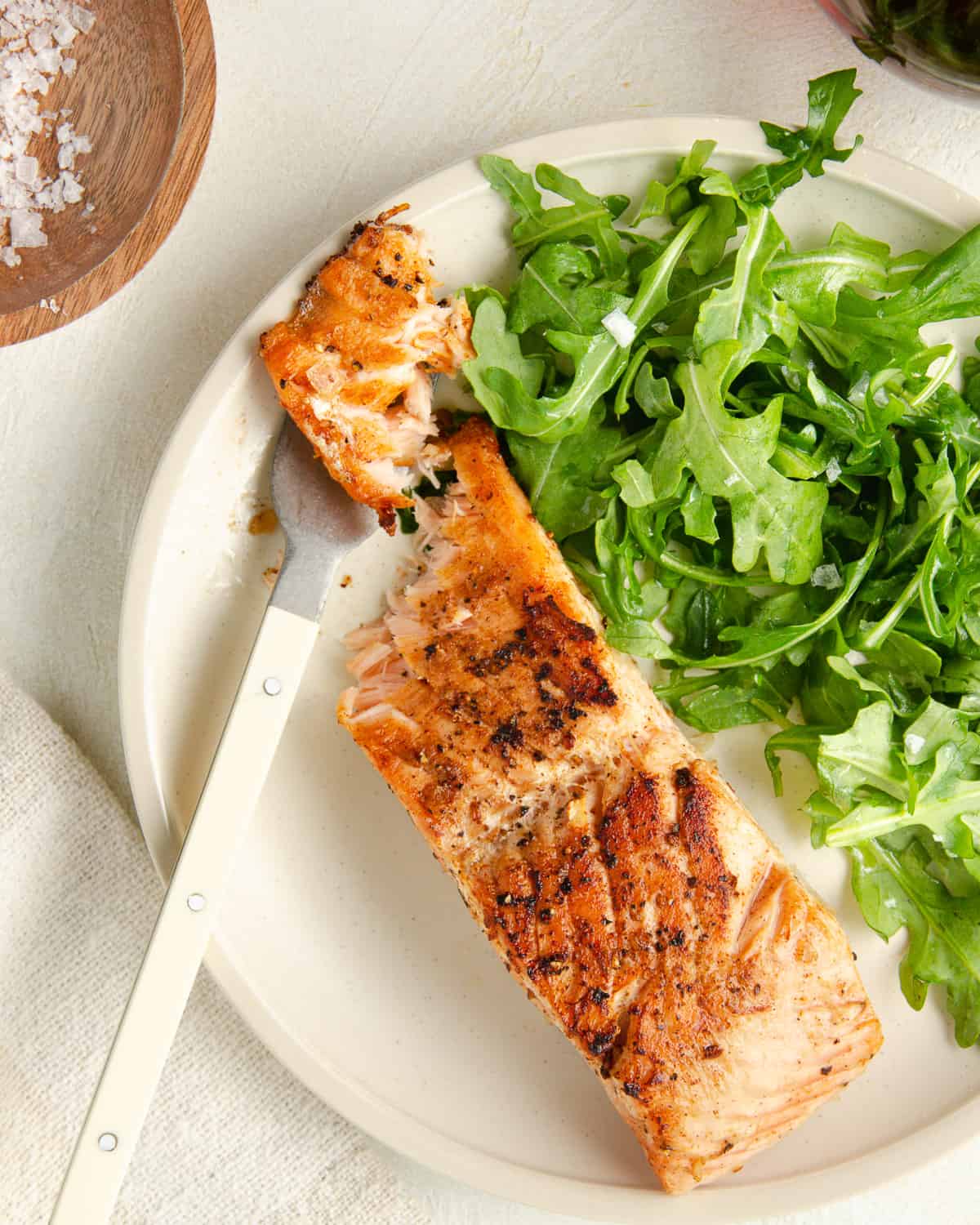
Okay, you know the deal. If you're here it means you've had THIS situation way too many times to count: you got the most beautiful filet of salmon, you spent the time to cook it and you take it out of the oven or pan and... IT IS COVERED IN WHITE STUFF. It's spilling out of what feels like every layer of the salmon and it's like WHAT IS IT?! Let me tell you, I had that so many times and I went out on an adventure to find out: how to cook salmon WITHOUT the white stuff. It's super easy, I promise, and it'll change your life!
The result: cooked salmon is juicy, tender and no white stuff! This is the only salmon recipe you’ll ever need!
Jump to:
So what even is that white stuff…
It oozes out of salmon when it cooks and makes us feel weird. What is it?
Well to be short: albumin and it's a protein that happens when you cook the salmon. It's edible and totally fine. To be long: it's albumin, a protein that is originally liquid in the fish that turns semi-solid as it cooks and comes out as this oozing white stuff that is totally fine to eat but freakish. It's a reaction that the salmon makes because it's being shocked by the heat.
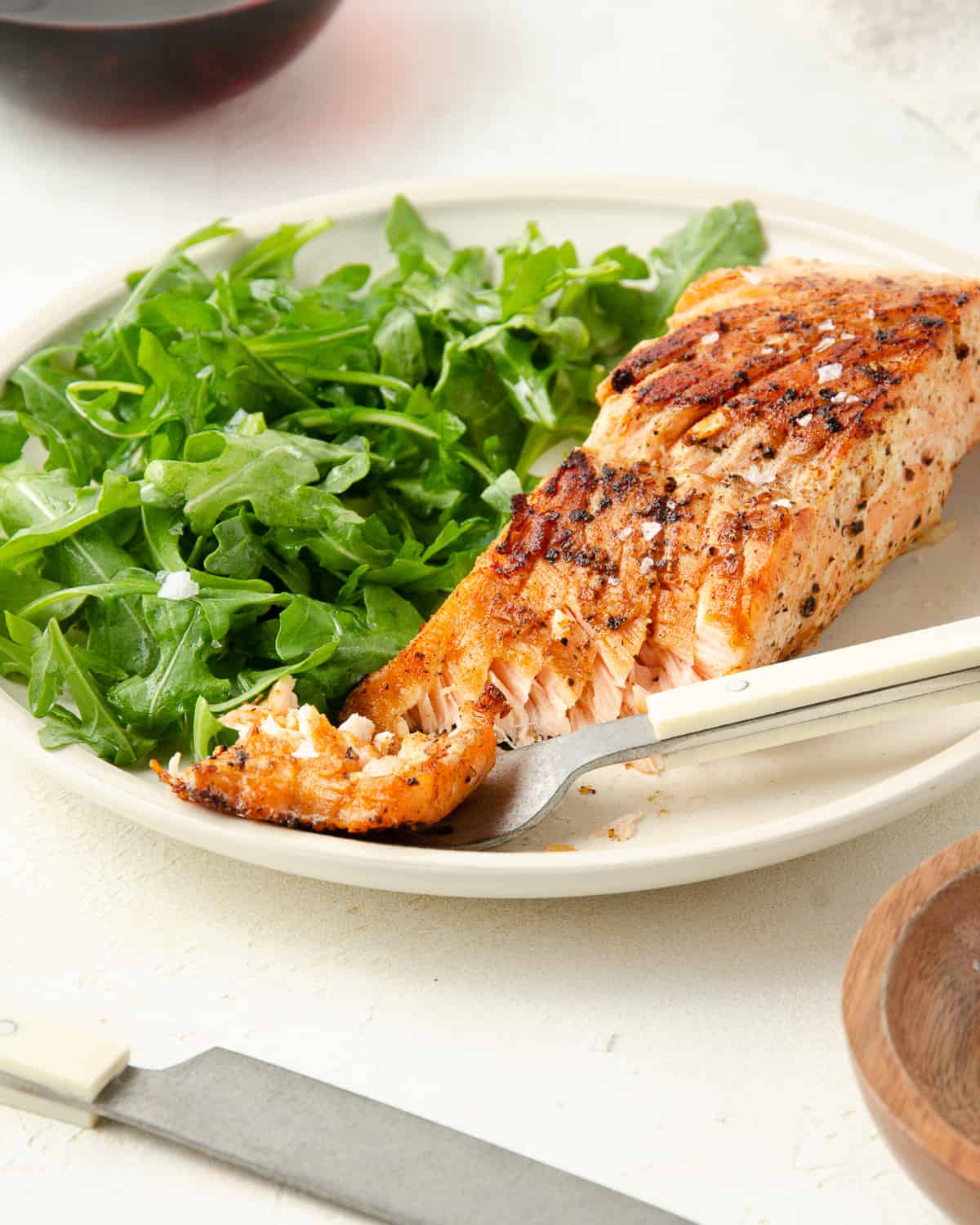
What Type of Salmon Should I Use?
There are over 6 types of salmon in the United States, making it hard to choose from at the store! If possible, try to buy wild Alaskan salmon.
Pacific Salmons
- King Salmon - highest in fat and usually known for an almost melting texture. King or Chinook Salmon is typically the biggest salmon filets and is great for serving a large crowd.
- Sockeye Salmon - very flavorful and one of the leanest cuts of salmon. Sockeye salmon is typically very thin looking and has a bright red color.
- Coho Salmon - medium fat content and has a more subtle flavor. Coho salmon is not as known as other types of salmon but is best for cooking whole.
- Steelhead Salmon - often very affordable and can be quite cheap. Steelhead salmon often tastes less like salmon and more like rainbow trout. It looks the most like Atlantic salmon.
Atlantic Salmons
- Atlantic Salmon - (aka farmed salmon) mild and affordable. Wild Atlantic Salmon is no longer available commercially, so Atlantic salmon is quite controversial.
Salmon Benefits & Nutritional Facts
Salmon is a great fish to cook with! It is not only a great source of protein and lower in calories, but it is rich in Omega-3 fatty acids, high in Vitamin B and also a good source of potassium!
Ingredients
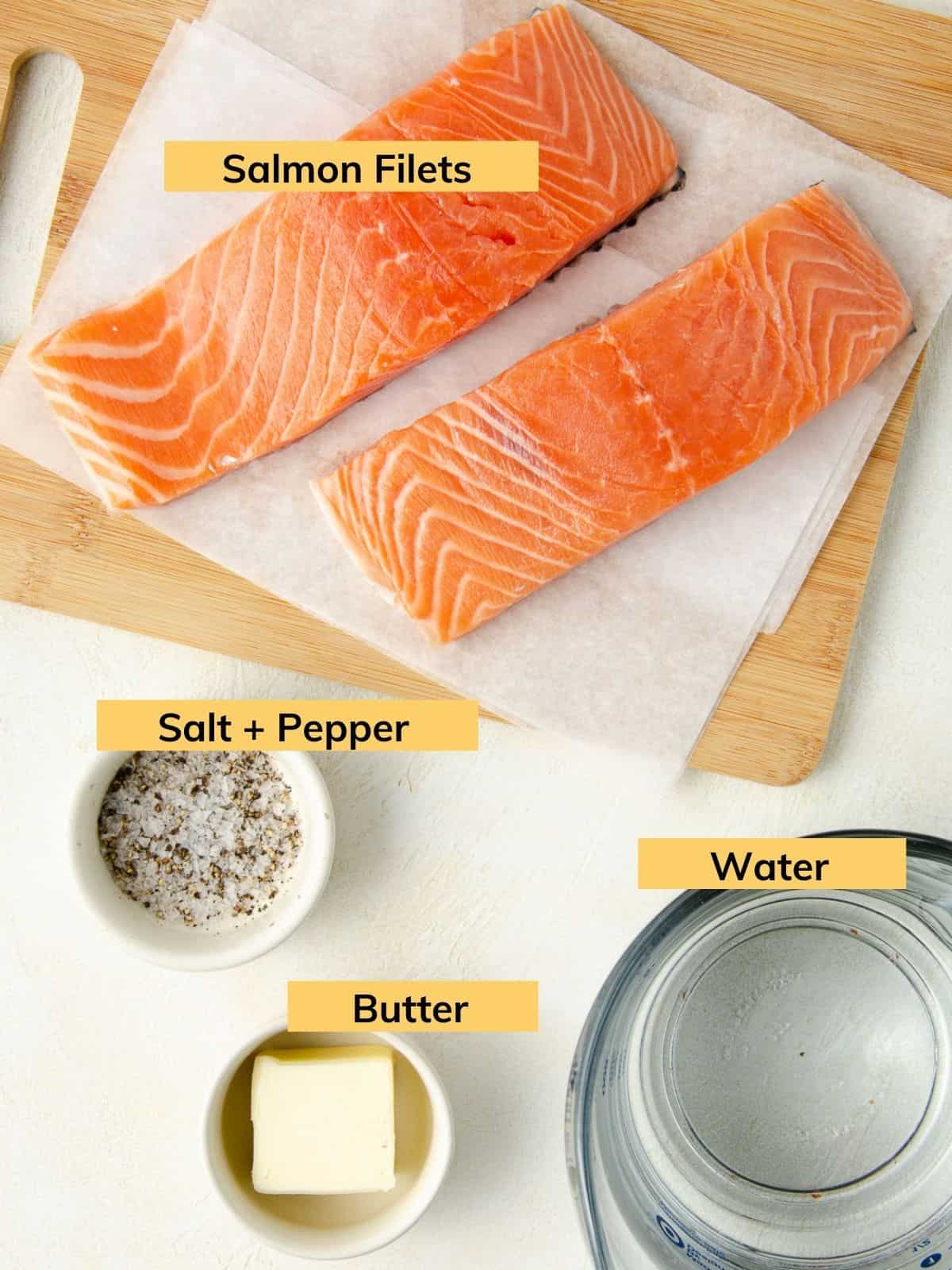
Making salmon perfectly only requires a few ingredients:
- Salmon Filets
- Cold Water
- Butter
- Salt + Pepper
How Can I Cook It So There’s No White Stuff
To be honest when I finally found the solution to a salmon without the white stuff or albumin, I was shocked... it's actually super easy!
The best way to reduce this is by first, brining the salmon in a nice cold bath of salty water. Now, normally a brine is super salty but because it's seafood I tone it down a little bit.
Once salmon filets are done in the brine, remove and pat dry. Season well with salt and pepper on non-skin side.
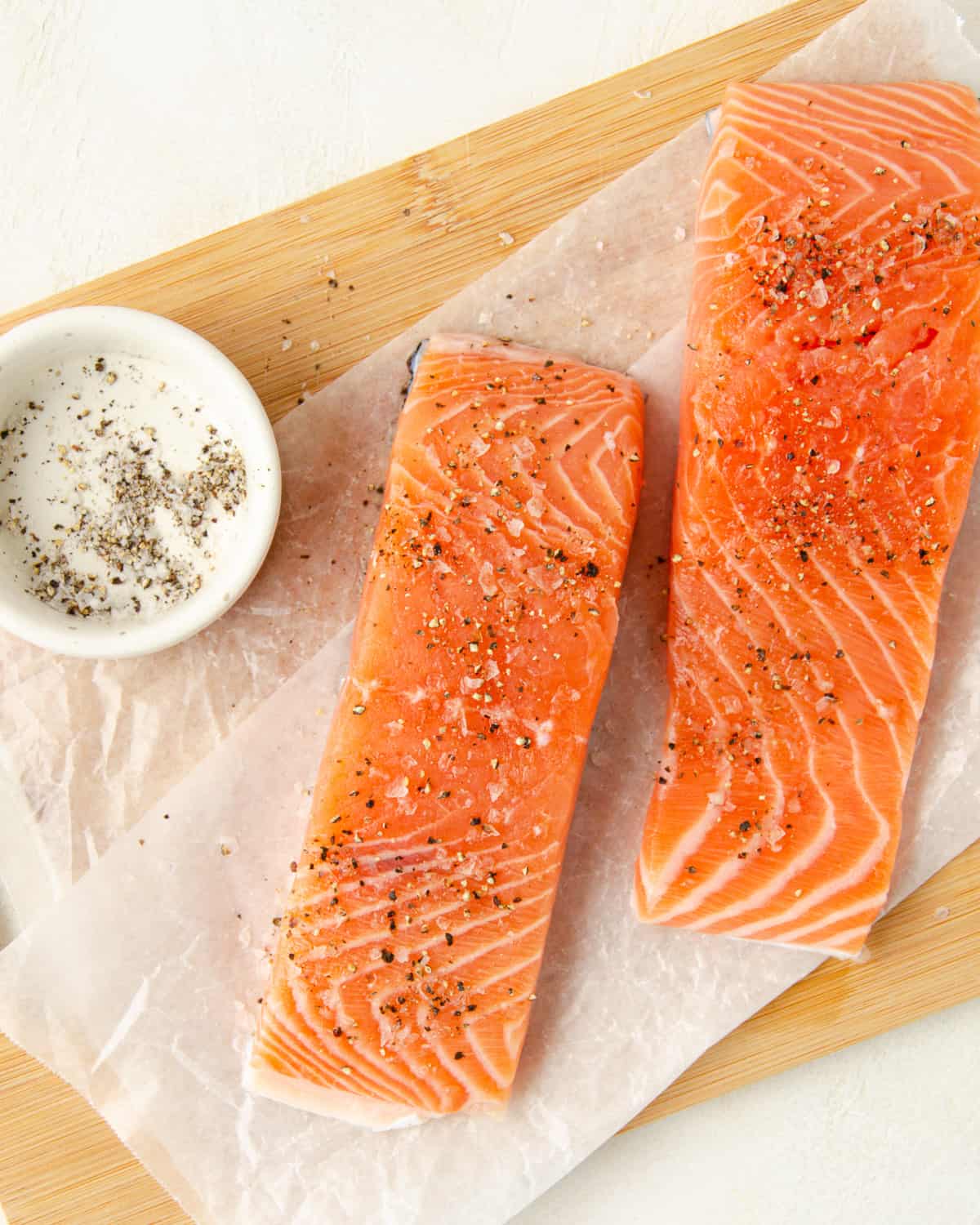
The next step is cooking in a cold pan with no oil and bringing it up to temperature.
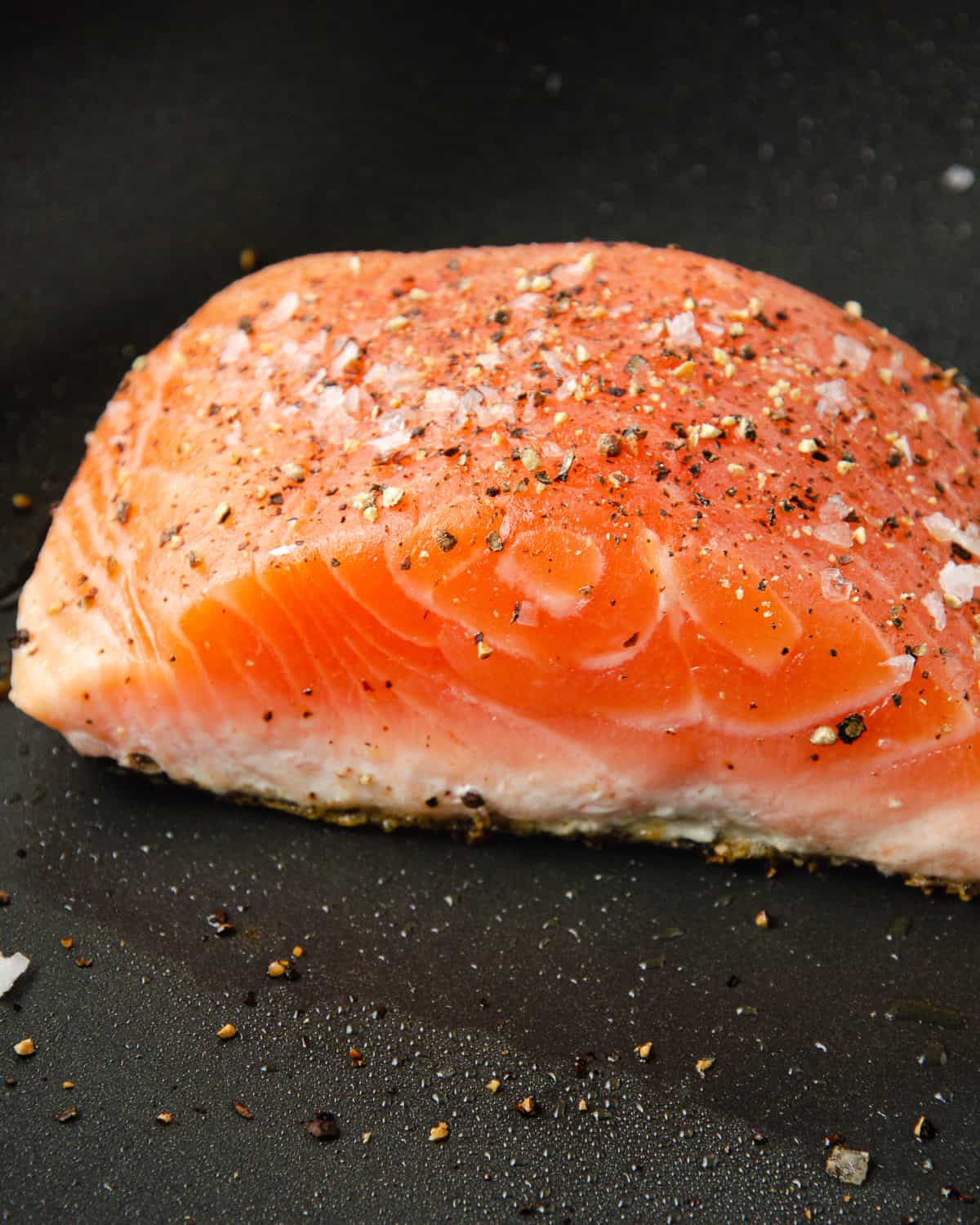
Once the salmon filets are about ⅓ of the way cooked.
You'll flip the filet and remove the skin if you'd prefer.
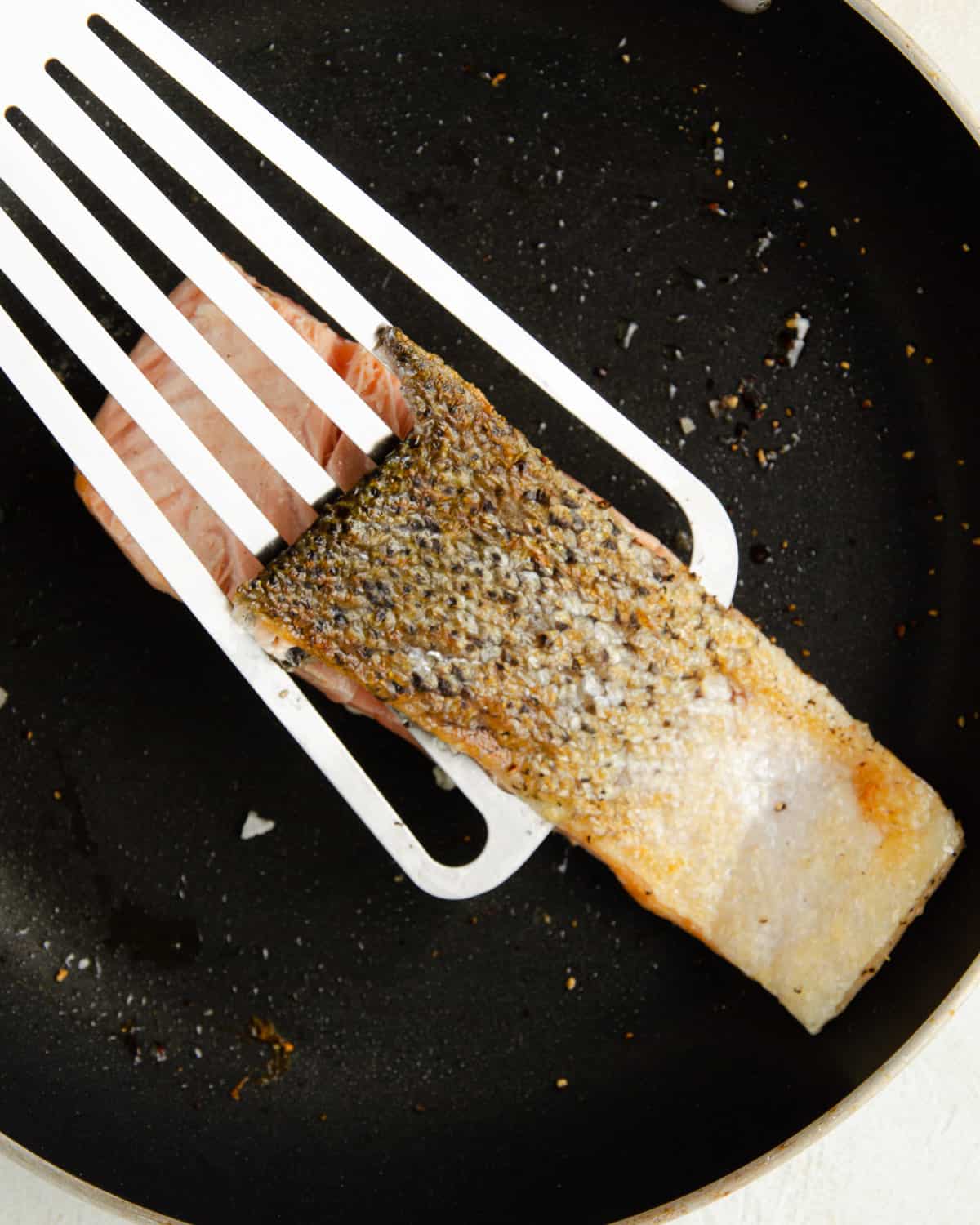
Then add butter to complete the cook until salmon reaches 120ºF internal temperature!
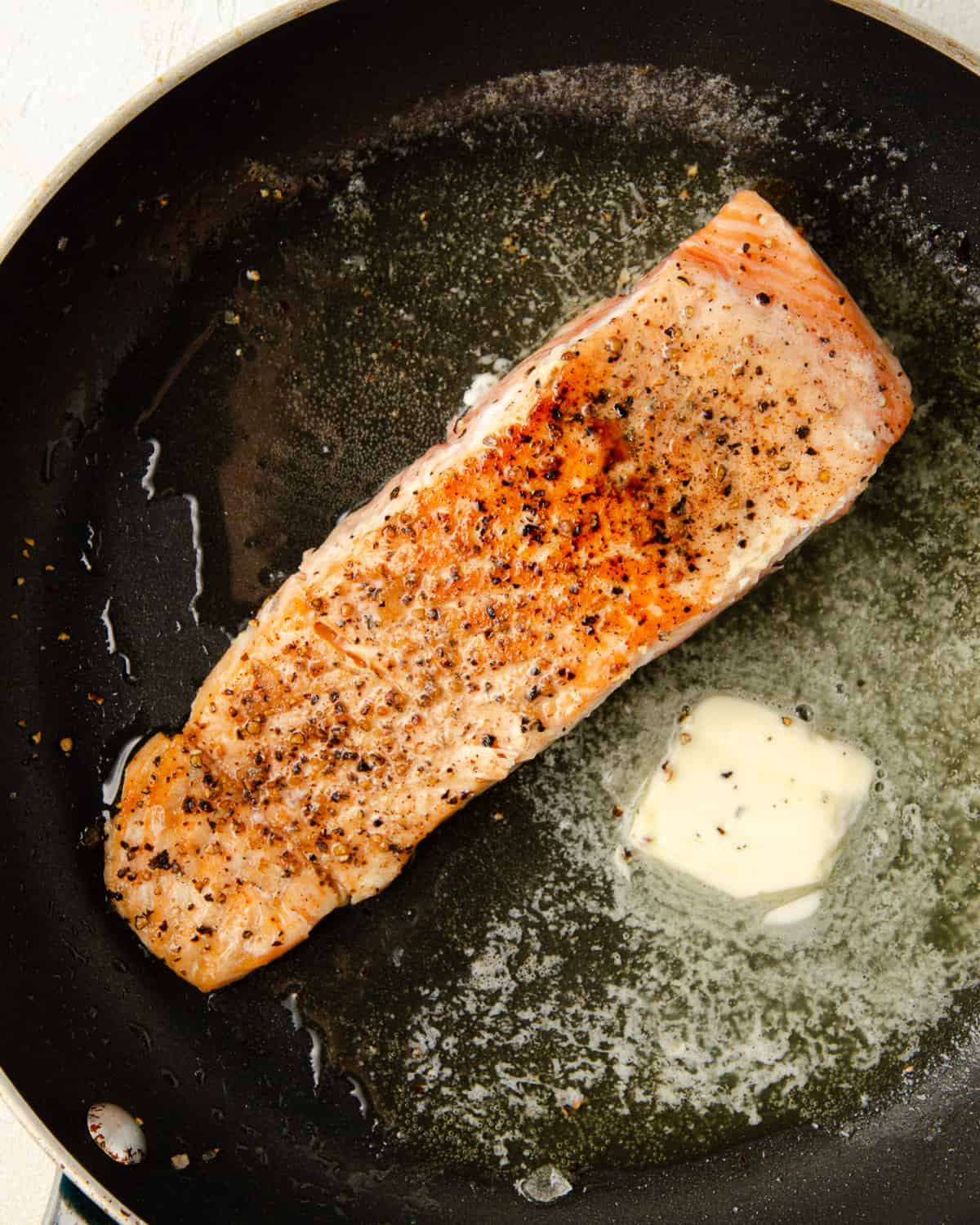
That's literally it .. I know!
How to Brine Salmon
Brining salmon not only helps eliminate the albumin that is released when cooking salmon, but it also adds great flavor. Think of it as a salt bath!
A traditional brine recipe is through ratios - mix 1 cup of salt per every gallon of water; or ¼ cup of salt per 4 cups of water. You can use this ratio to brine chicken, meat or seafood. You’ll want to stir until the salt is completely dissolved in the cup and then add the salmon.
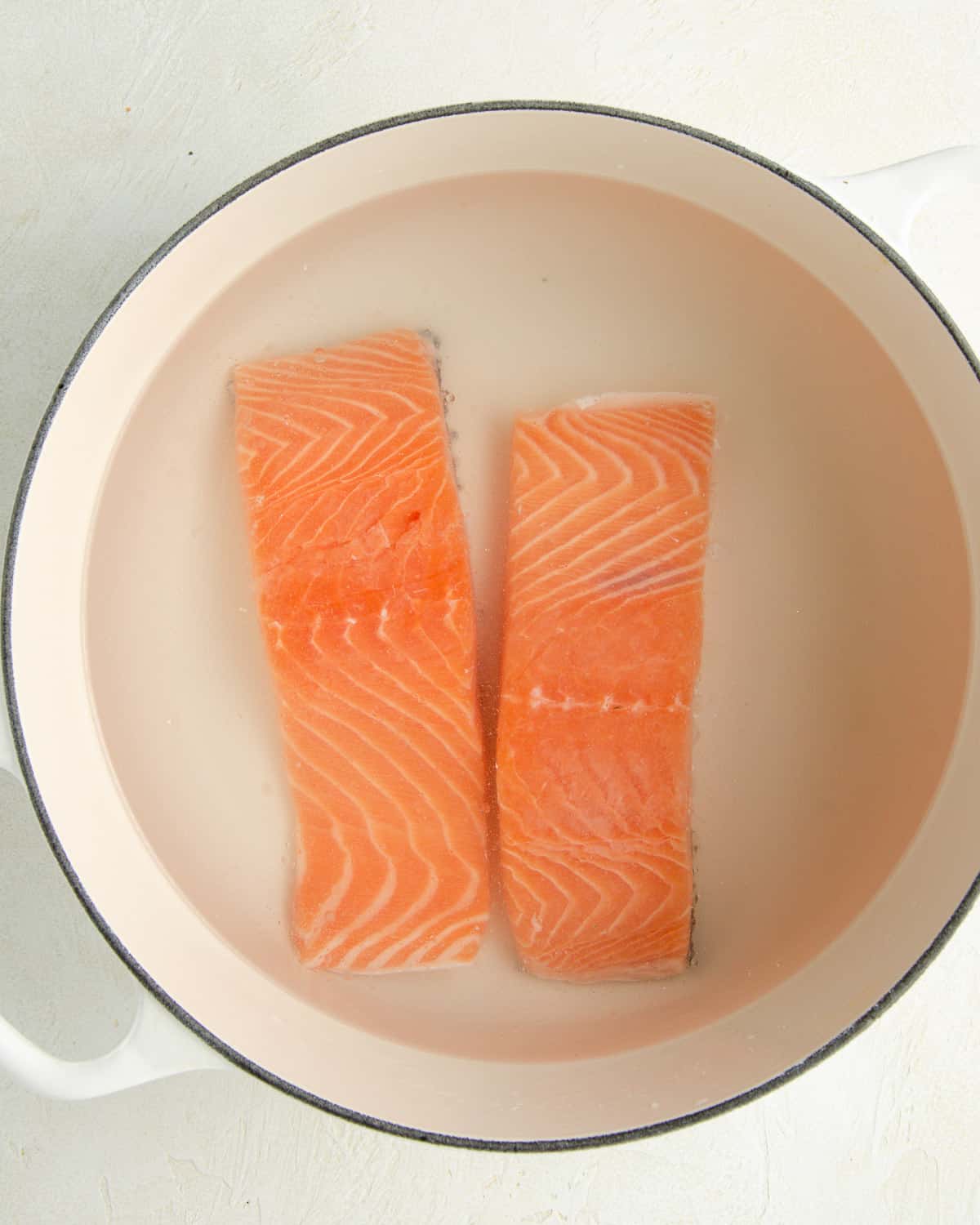
Frequently Asked Questions
Yes! Albumin is perfectly safe to eat. It is only a protein that is released from salmon when cooking. This recipe ensures you won’t have to, though!
You can definitely use frozen salmon! If using frozen salmon filets I suggest to brine them for longer to dethaw the filets prior to cooking.
When salmon is cooked at a cold temperature, it can cook unevenly and will most likely release the white stuff when cooked in a hot pan. It is best to brine in cold water that comes to room temperature OR let sit on the counter for 15-20 minutes prior to cooking.
I wouldn’t brine salmon for more than overnight otherwise it may get TOO salty. I suggest 15-120 minutes for optimal taste.
Nope! You don’t need to rinse salmon after brining it. Only pat salmon filets dry with a paper towel and then it’s ready to sear.
If brining for longer than 30-minutes, let brine in the fridge. While you can brine at room temperature if the water is salty enough, it's safest to brine in the fridge (until ready to bring to room temperature for cooking).
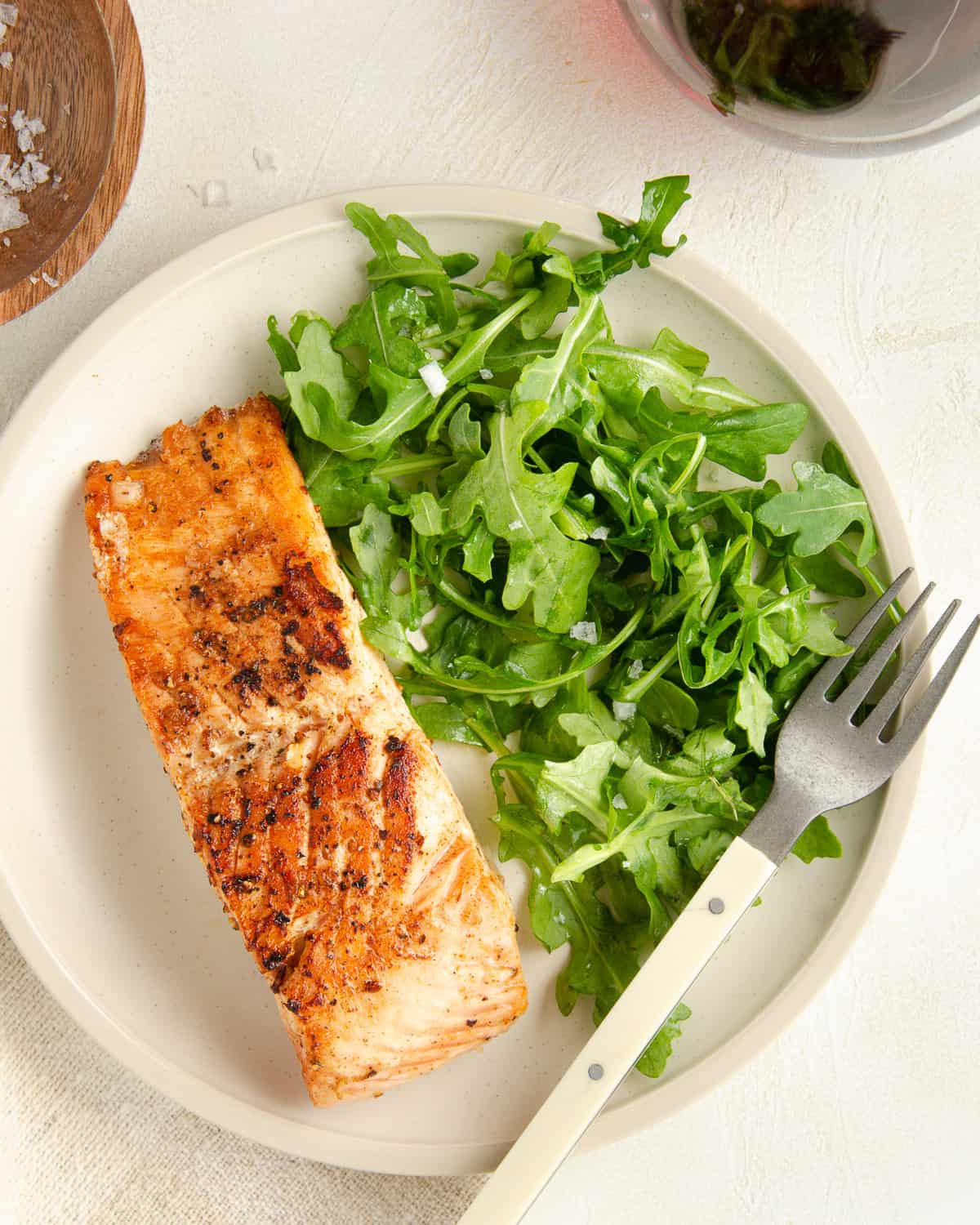
What to Pair with Perfectly Cooked Salmon
- Easy Asian Cucumber Salad
- Israeli Couscous Salad
- Kale Fennel Dried Fig Salad
- Kale Quinoa Salad
- Cold Soba Noodle Salad
Other Fish Dishes
- Seared Ahi Tuna Tacos
- Easy Grilled Swordfish Tacos
- Fried Tilapia Tacos
- Blackened Ahi Tuna
- Dairy-Free Lemon & Shrimp Risotto
📖 Recipe
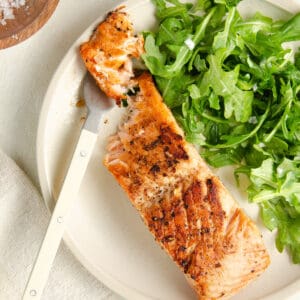
How to Cook Salmon without that White Stuff
Ingredients
- 2 Filets Salmon
- 2 tablespoon Unsalted Butter
- 8-10 Cups Cold Water
- 3 tablespoon Kosher Salt
- 1 teaspoon Salt
- 1 teaspoon Black Pepper
Instructions
- In a large pot, add the cold water and 2-3 tablespoon of kosher salt. Stir a few times until the salt dissolves.8-10 Cups Cold Water, 3 tablespoon Kosher Salt
- Add the salmon filets directly into the pot. If the water doesn't cover it, add a little more water until the filets are submerged. Let sit in the brine for at least 1 hour and up to overnight. If brining for longer than 30-minutes, let brine in the fridge and then brine at room temperature for 30-minutes prior to using.(If using frozen salmon, ensure salmon is fully thawed in brine prior to removing from brine.)2 Filets Salmon
- Once the salmon finishes in the brine, take out and onto a plate. Dab tops of filets dry with a paper towel.
- Season the tops of the salmon filets (skin-down) with ⅔ of the salt and pepper.1 teaspoon Salt, 1 teaspoon Black Pepper
- Set a large pan (non-stick is best) on the stove-top.
- Place the salmon filets skin-side down on the pan. Turn the heat on to medium.
- Cook on medium-heat until the salmon turns pink about ⅓-½ of the way. (About 6-8 minutes.)
- Flip the salmon over back into the pan so that the side that had the skin is closest to you.
- If you do not want skin on the salmon, use your spatula to remove the salmon from the skin. Think of it as lifting the salmon from the pan right above the skin. Sometimes the skin sticks, just scoop it away with a spoon or with the spatula. Throw the skin to the side or in the trash - it acts as a protectant from the heat in the beginning.
- Place the butter between the filets and continue to cook.2 tablespoon Unsalted Butter
- Cook the salmon in the butter for about 5-minutes or until the middle of the salmon hits an internal temperature of 120ºF.
- Remove from pan and eat immediately, or store in an airtight container in the fridge for 3 days.


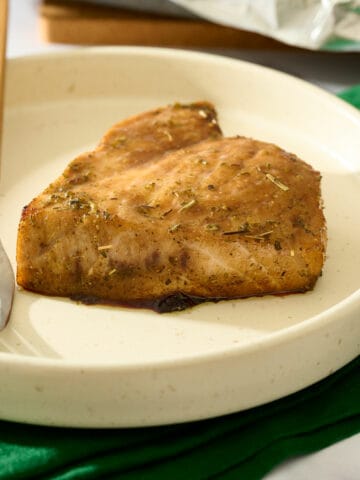


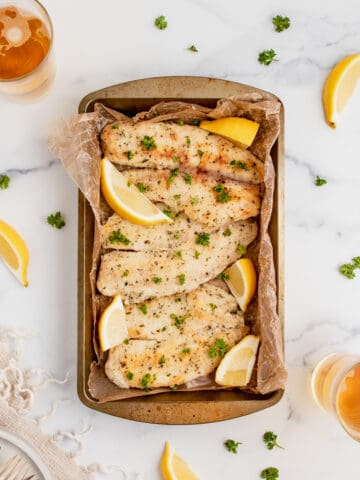
Jg
Why do you say you wouldn’t brine overnight and then in recipe say you can bring over night? Can you clarify please
Elise Shivamber
Hi there! Apologies on the confusion - I would not brine any longer than overnight (ex: 2 days would be really long!). Overnight is fine, but you really don't need to brine more than 2 hours!